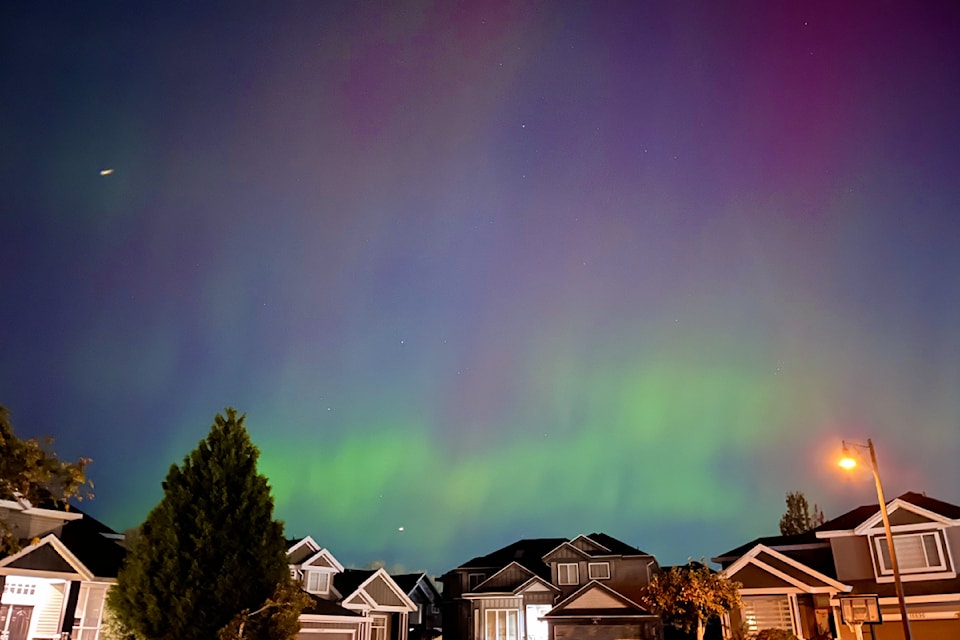Space Weather Canada's forecast shows the Northern Lights could make one more appearance over B.C. Friday night.
The 24-hour forecast shows "stormy" and "major storm intervals" in the sub-auroral area, which the majority of B.C. is in.
People across the province have been able to witness the spectacle this week following a geomagnetic storm.
A major geomagnetic storm watch is in effect until Saturday, according to Space Weather Canada.

The U.S. National Oceanic and Atmospheric Administration issued a severe geomagnetic storm alert on Wednesday (Oct. 9) after after an outburst from the sun was detected earlier in the week week. Such a storm increases the chance of auroras — also known as northern lights — and can temporarily disrupt power and radio signals.
NOAA's Friday forecast shows continued higher-than-normal activity.
What causes northern lights?
The sun sends more than heat and light to Earth — it sends energy and charged particles known as the solar wind. But sometimes that solar wind becomes a storm. The sun's outer atmosphere occasionally “burps” out huge bursts of energy called corona mass ejections. They produce solar storms, also known as geomagnetic storms, according to NOAA.
The Earth's magnetic field shields us from much of it, but particles can travel down the magnetic field lines along the north and south poles and into Earth’s atmosphere.
When the particles interact with the gases in our atmosphere, they can produce light — blue and purple from nitrogen, green and red from oxygen.
Why have there been so many solar storms lately?
Solar activity increases and decreases in a cycle that last about 11 years, astronomers say. The sun appears to be near the peak of that cycle, known as a solar maximum. It's not clear exactly when the cycle will begin to slow.
In May, the sun shot out its biggest flare in almost two decades. That came days after severe solar storms pummeled Earth and triggered auroras in unaccustomed places across the Northern Hemisphere.
How can you best see the northern lights?
NOAA advises those who hope to see the northern lights to get away from city lights.
The best viewing time is usually within an hour or two before or after midnight, and the agency says the best occasions are around the spring and fall equinoxes due to the way the solar wind interacts with Earth’s magnetic field.
– With files from Black Press Media



